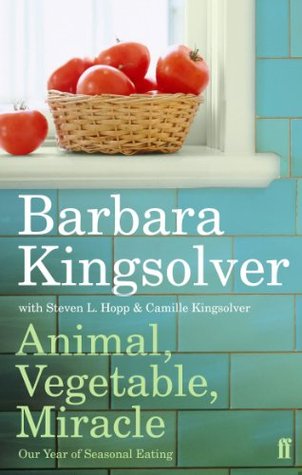More on this book
Community
Kindle Notes & Highlights
The baby boom psyche embraces a powerful presumption that education is a key to moving away from manual labor, and dirt—two undeniable ingredients of farming. It’s good enough for us that somebody, somewhere, knows food production well enough to serve the rest of us with all we need to eat, each day of our lives.
flesh, or else a category of ingredient known as “added fats.” If every product containing corn or soybeans were removed from your grocery store, it would look more like a hardware store. Alarmingly, the lightbulbs might be naked, since many packaging materials also now contain cornstarch.
Every set of fad-diet rules is essentially framed in the negative, dictating what you must give up. Together they’ve helped us form powerfully negative associations with the very act of eating.
Food sellers prefer to market more food to people who have money, rather than those who have little.
Europeans of the Renaissance swore by it as an aphrodisiac, and the church banned it from nunneries.
It’s best eaten the day it is cut, period. When transported, even as refrigerated cargo, the plant’s tight bud scales loosen and start to reveal the embryonic arms that were meant to become branches.
Japanese food scientist Kikunae Ikeda first documented that asparagus had a flavor that lay outside the range of the four well-known tastes of sweet, sour, bitter, and salty. Its distinctive tang derives from glutamic acid, which Dr. Ikeda named “the fifth taste,” or umami.
monosodium glutamate.)
Saturday dawned dark, windy, and fiercely cold. The day’s forecast was for snow. Spring had been slapped down by what they call around here “dogwood winter,” a hard freeze that catches the dogwoods in bloom—and you thinking you were about to throw your sweaters into the cedar chest. April fool.
Rhubarb isn’t technically fruit, it’s an overgrown leaf petiole,
Asparagus is one of the best natural sources of folic acid, vitamins A, C, and K, some B vitamins, potassium, phosphorus, and glutathione, which is a potent antioxidant and anticarcinogen.
In Peru, the original home of potatoes, Andean farmers once grew some four thousand potato varieties, each with its own name, flavor, and use, ranging in size from tiny to gigantic and covering the color spectrum from indigo-purple to red, orange, yellow, and white.
According to Indian crop ecologist Vandana Shiva, humans have eaten some 80,000 plant species in our history.
Six companies—Monsanto, Syngenta, DuPont, Mitsui, Aventis, and Dow—now control 98 percent of the world’s seed sales.


